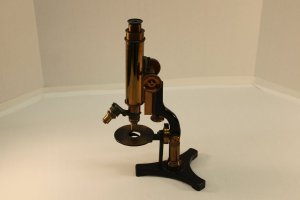The microscope is one of the most powerful instruments for diagnosing disease. It is of such importance to the physician that purchasing a microscope has long been a prerequisite for medical school.
The first microscopes appeared in 1590 when Dutch lens grinders Hans and Zacharias Janssen made the first microscope using two lenses in a tube. Later, in the 17th century, simple microscopes were used to view cells and bacteria using a single lens.
It was not until the 18th century that physicians began to believe that bacteria lead to disease and the use of microscopes became more popular. However these early microscopes resulted in very blurry images.
In 1830, Joseph Lister fixed this problem of spherical aberration by showing that several weak lenses used together at certain distances gave a good magnification without blurring the image. This discovery was instrumental not only in the development of the modern microscope but also the beginnings of a new way to diagnose and treat disease.
The collection at the Edward Hand Medical Heritage Foundation includes several examples of microscopes spanning over one hundred years. From student microscopes manufactured in 1865 in London, England, to research microscopes manufactured in the 1940s in Germany. The collection also includes a microscope manufactured right here in Lancaster, Pennsylvania by John W. Silde in 1878. Very few of these Silde microscopes remain; however one can also be found on display at the Walter Reed Armed Forces Institute of Pathology.
As with nearly all of our collection, all of the microscopes in the EHMHF collection were donated by local, Lancaster County doctors, collectors, and historians.

